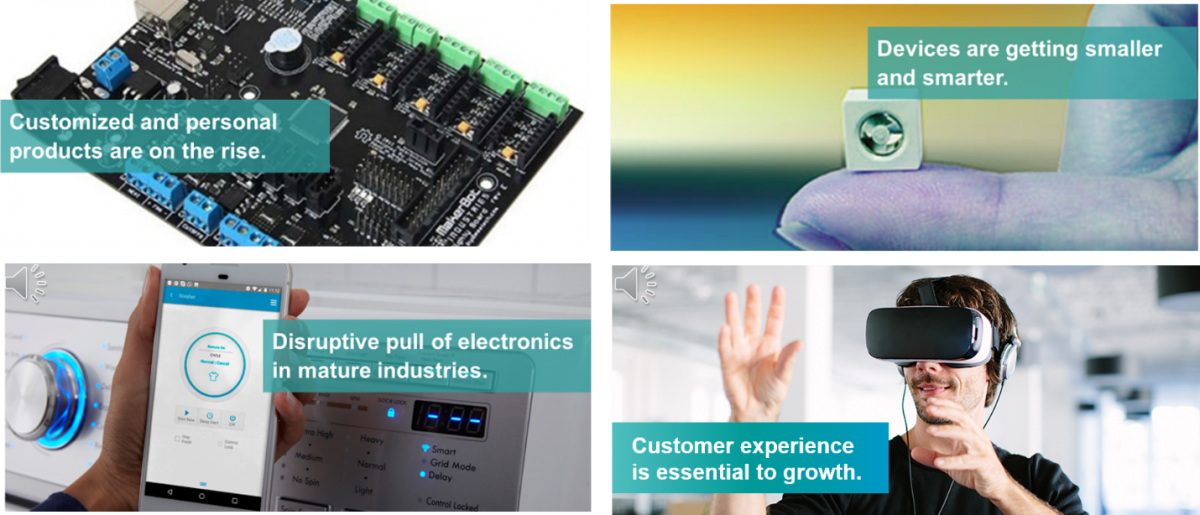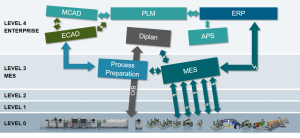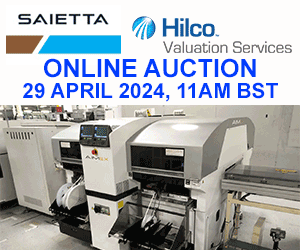Trends in the Electronics Market are Driving Both Opportunities and Challenges: How do we address them?

By Fram Akiki and Oren Manor, Siemens Digital Industries
Electronics has become personal. People want to take their electronics anywhere and do more with their devices. This desire is driving smaller projects with increased features and functions. Tech designers and manufacturers have to figure out how they can move from single-part-number, mass production to making flexible custom products manufactured in small lot sizes.
Electronics permeate every aspect of our lives, including mature industries such as white goods and automotive. In the end, success or failure is determined by the customer experience, how the product performs out of the box and its value over time. This means we need to change how we think about products. How we bring them to market and even how we use them over time. Consequently, generative design techniques are becoming important. Generative design uses technology that mimics nature’s own evolutionary process. It can be combined with model-based engineering hardware-software control functions, so that they are integrated together hierarchically to become a system of systems.
In bringing these products to market, we believe investment in advanced robotics and additive manufacturing can increase efficiency and costs over time while reducing time to market. Machine learning will also help. Software and systems that teach themselves to respond and grow with new data will greatly increase efficiency.
But what does this mean for an electronics company now? It means being able to improve design-concept workflows from new product introduction (NPI) through performance optimization. It means building quality and excellence into manufacturing at the realization phase—then bringing it all together using analytics and life-cycle management techniques in the utilization phase.
With the challenges we are facing today, we believe that we have no other choice but to choose smarter solutions for electronics manufacturing. A typical factory includes different types of manufacturing: S&P lines here for the PCB assembly; mechanical lines producing plastic molding or doing metal press fit; box build and manual assembly and system assembly; and the engineering department supporting the operations. They are all stakeholders in the factory.
Each stakeholder has an application that provides reasonable support for producing his or her task, but the issue that they are facing is the lack of connectivity between the different systems. What they need are solutions that connect all of these people together including all of the different domains digitally: mechanical, electronics, software, and box build. connected together on a common platform.
This digital route, though, has to have formats that enable us to send rich, smart data from the different domains here, from design to engineering, into production and back, without needing to worry about the exact type of equipment, the exact type of processes, and the specific applications that will be used.
Valor, now part of Siemens Digital Industries, has brought us ODB++, today the de facto way of sending data from design to manufacturing. All of the information is included to perform robust design for manufacturing (DFM) and create all of the different machine programs for the manufacturer. Its open-product-model methodology provides us with machine-agnostic output for the different machines to standardize PCB assembly.
Recently, the Valor developers brought us a new specification, OML (Open Manufacturing Language), which enables encapsulating a digital twin of performance and allows us to capture all the data from machines and processes to share with engineering as well as design to improve future products.
This has been pivotal to Siemens own manufacturing strategy. It also allows our customers the freedom to choose any equipment they want as well as applications different from other different suppliers because they can interconnect them using OML.
Technology products are mechanical as well as electrical. Historically, these workflows have been separated, with the electronics flow completely disconnected from the mechanical flow. But what if somebody decided to change a connector? Because of supply chain issues and inability to source a specific component, the specific connector that was chosen in the design process, while supposedly an equal in size, function, and form, might actually slightly too big. Then, at box build, they find out that the panel doesn’t fit. If the applications and the processes were connected, this issue would be discovered, analyzed, and flagged much earlier in the process.
We are the Problem, and the Problem-Solvers
Part of smart manufacturing is an important human element—collaboration between design, manufacturing, simulation, DFM, the virtual verification, and testing. When they go into engineering and before execution, we aim to know that everything is 100% synchronized and can actually be assembled in reasonable quality within reasonable time and cost.
What has really changed in the last couple of years that we need to talk about smart manufacturing and Industry 4.o? We have changed. We are the consumers. We want highly differentiated products. We want them delivered tomorrow morning at the same cost as a mass-produced computer. We want to go online and customize our own next-generation computer and choose the memory, the screen, the hard drive, all of the different peripherals, the memory, and the CPU; and then we want it built (including thorough testing and optimization to make sure it performs as we expect), and delivered to our doorstep the next morning.
This means manufacturers now have to make very small, customized lot sizes, in small batches, while maintaining the same cost so they can still make a profit. To do this, they need a flawless process. They need to simulate and digitalize everything, and they really need to make it right the first time. They have to standardize and harmonize their processes so they can make the product anywhere around the world to meet the delivery schedules.
The number of new product introductions has gone significantly up in the last five years. A new solution would help in these demanding circumstances. Some of our customers, who might have been doing one NPI a week or a month, are now doing 600 NPIs a year—a couple per day. Revisions are also increasing.
One of the main things we believe helps with efficiency in these situations is to centrally manage all of the part libraries. Part libraries are the component shapes required by the machines on the line. Traditionally, people would manage libraries with the machine software, which meant managing 10 to 15 different libraries for each machine vendor. When you had an NPI with a couple of new components, you had to repeat this process with every machine software.
However, if you use a standard, centralized library, you create a component once and then generate its shape and the library data for each machine platform independently. This practice can reduce programming a machine for a revision from 3-4 hours to 10-20 minutes. When you are doing four or five NPIs a day, this amount of time savings is critical.
Many of our customers manage global operations. They design and manufacture in multiple locations. They need the ability to control each site independently but be able to share processes and information. A platform that can be networked and used globally across sites would greatly increase efficiency.
We also need the system to provide feedback so we can do closed-loop manufacturing. We cannot improve and make things more efficient as we go from revision to revision if we don’t have good feedback from manufacturing. We really need to gather all of the different information and create non-conformance reports to send back and forth. To achieve zero-defect targets and build it right the first time, a strong closed-loop manufacturing system is critical.
Planning Is the Biggest Hurdle
The other big challenge is planning. Traditionally, planning is done via Excel or a whiteboard. But what’s really needed to meet today’s challenges is a sophisticated system that can predict what is going to happen on the shop floor, a system that can simulate the manufacturing environment, that can simulate the different options you have, and allow you to make the best decision.
At Siemens, we have combined planning solutions for both simulation and test, as well as the full factory and box build and system assembly, to simulate what is happening on the production floor. Ideally, our solutions provide information on the entire factory and all of the material, where it is and how much is available. We need to have some kind of understanding of what is happening with work orders, and the PCBs that we will be assembling. What are the different components required, which component could be placed, based on which machine? We know that some lines have machines that have an issue with small components or very large components. We need information on all boards. Some boards are too big for some machines. We really need to understand the machine capability. Once we have all of that information, and more, we can simulate it.
For example, we asked a large manufacturer of air conditioners who was considering an MES project what their biggest challenge was. Their number-one challenge was planning and, in the last couple of years, the average lot size fell from 5,000 to 80 PCBs for air-conditioner compressors. Their business is affected by product uniqueness as well as supporting operations in 110 countries, working with multiple distributors and resellers, in different markets that have their own requirements. When they have all of these different revisions and models, they end up with very small batches.
Planning today is probably the number one hurdle for improving efficiency. The machines today are all very fast, accurate, and dependable but what they lack is a good planning solution in the backend.
In one of our previous articles, we mentioned our Furth case study. Furth is one of the Siemens factories in Germany making products that are close to end of life. They have to deal with many types of products that they might need to manufacture, and they were using many different solutions, applications from various providers that they had stitched together.
Furth factory before implementing the new Camstar MES for electronics manufacturing.
The management team in Furth decided the total cost of ownership of this stitched-together solution was too much. Every time a new application came to the market, they had to take it apart and retest it for their systems. What they wanted was one solution.
But how do you handle the development of a smart manufacturing solution in a shop-floor environment that has many proprietary applications, interfaces, and old machines?
Furth one-system solution is much cleaner, easier, and more cost-effective to maintain.
The MES in any visualization and manufacturing intelligence system is only good if the data is correct, accurate, and moving. What are the advantages of a single MES system that covers the entire flow? In the past, we tended to run two different MES systems. One on the mechanical flow and one on the electronic flow. As a result, we had two different dashboards and traceability databases that required manual manipulation and joining data from the two systems. This led to a much higher total cost of ownership.
What Siemens offers, as a solution to these issues for making electronics in today’s demanding marketplace, is a platform based on the Camstar MES system, a tried-and-true solution predominantly adopted by semiconductor and medical-device manufacturers over the past 20 years. It now incorporates many modules from the Valor planning, traceability, materials management, and analytics software tools provided in the Valor Manufacturing Solutions suite by Mentor Graphics.
With these tools fully integrated into a single system, we benefit from a commercial, proven MES system that includes meeting the needs of the electronics manufacturing market. And, what this means for everyone is a shorter time to deploy at a much lower cost.
To learn more, the webinar discussing these issues in-depth is available on demand at Engineering 360.
About the Authors
Fram Akiki has over 30 years of experience in the electronics and semiconductor industry. He is Vice-President for Electronics Industry at Siemens. Before joining Siemens, Fram was an executive for 12 years with Qualcomm in the chip set division. In 21 years with IBM in a microelectronics group, he holds a BS in Electrical and Computer Engineering from Clarkson University and an MS in Electrical Engineering and an MBA in International Business from the University of Vermont. He holds a patent on RFID cellular connectivity for the Internet of Things market and is an adjunct instructor at Clarkson University.
Oren Manor is the Electronics Manufacturing Business Director at Mentor Graphics Valor Division. Oren joined the Valor Division at Mentor Graphics in 2012 and served in a number of business positions including Partner Management in Manufacturing Engineering Business Development. He previously served as VP of Sales and Marketing at Signature IT, a software company providing data management solutions for industrial companies and held senior sales and marketing positions at Jungo and NDS. He holds a BS in Computer Science & Electronics from Tel Aviv University.













